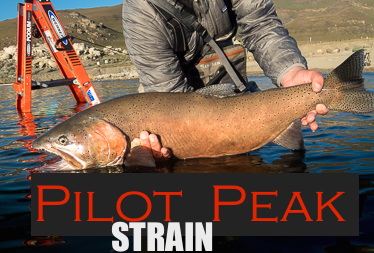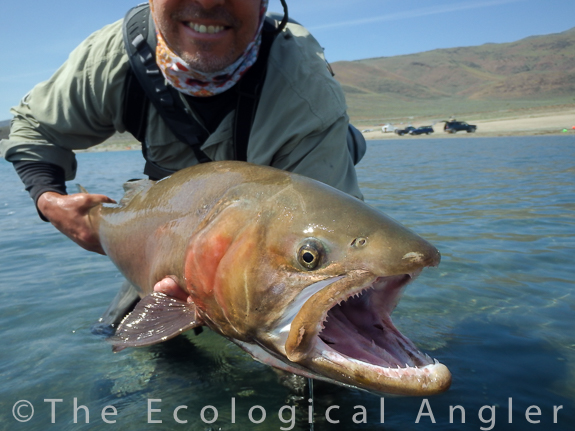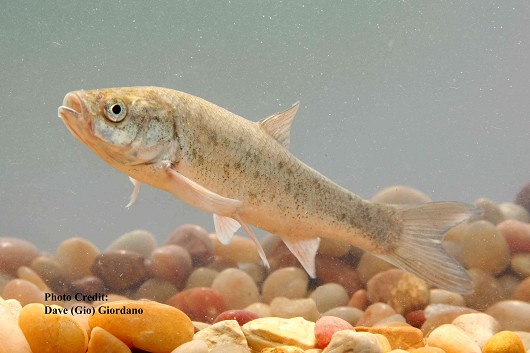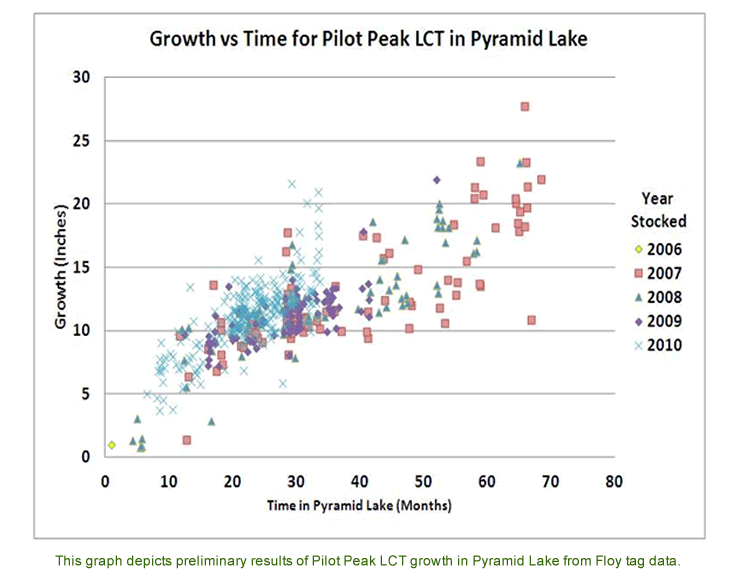The Ecological Angler
ecoangler.com
Pilot Peak Strain Lahontan Cutthroat

Side your time-scale way over to the left and set your view to wide-angle. I'm thinking some 15,000 years ago. Northwestern Nevada - today a mostly dry high-desert - was instead covered by a vast, deep body of water. At one time, Lake Lahontan was one of the largest lakes in North America. With over 10,000 square miles in area, this ancient lake once encompassed Walker Lake in the south, Pyramid Lake to the west, and Winnemucca Lake in the northeast.
Pyramid Lake is the deepest part of ancient Lake Lahontan and is the only lake where the native cutthroat continue to coexist with the complete food web of prey fishes (e.g., tui chub). When Lake Lahontan desiccated, all of the other Lahontan cutthroat populations became isolated in smaller portions of the Great Basin and natural selection pushed them along unique evolutionary journeys. Walker Lake, for example, may have dried up completely in recent geological times. The lacustrine trout of Walker Lake would have died-off. For a new population to form in Walker Lake, stream resident Lahontans from the Walker River would need to recolonize the lake. However, those stream resident cutthroat were not prefectly evolved to thrive in a large lake like Walker. Only the Pyramid Lake population remained where its evolutionary genetics continued to fine-tune its role as the longest-lived, largest-bodied keystone predator in the ancient lake (Trotter, 2008).

As pictured above, lake dwelling Lahontan cutthroat can grow to large size. (The Lahontan above weighted 18 lbs.) As residents of ancient Lake Lahontan, these cutthroat evolved into predators highly trained on capturing the native forage fish. The tui chub was likely the most abundant of these forage fish on Lake Lahontan, and is today the most abundant fish in Pyramid Lake.

The Tui chubs are the dominant fish of Pyramid Lake in number and biomass. As the main prey species for Lahontan cutthroat trout, the health of their population is an important indicator of the overall health of the lake's ecosystem. There are two forms within the lake. One is the Lahontan Creek Tui chub, Sipheteles bicolor obesa and the Lahontan Lake Tui chub, Sipheteles bicolor pectinifer. They tend to be dusky olive, brown, or brassy on the back and white to silver on the belly. The younger the fish, the more silvery the body color. Lahontan cutthroat trout prefer to feed on the younger and smaller chubs. They tend to congregate along the shallows in the summer and dive to depths lower than 61 meters in the winter and are not as active as in the spring. The spring reappearance of the Tui chubs is observed mid-May. They are primarily foragers, but fisheries has observed that they become predators when they are large adults.

To make the most use of the large biomass of tui chub, the Lahontan cutthroat evolved a genetic basis to growing large. This genetic basis is fully expressed in the original Pyramid Lake strain of cutthroat, where the unique predator-prey relationship with the tui chub continued to exist after most of Lake Lahontan dried up.

The extreme large size is unique to the native Lahontan's of Pyramid Lake (a.k.a. Pilot Peak Strain). For instance, without the presence of forage fish in Summit Lake, the cutthroat rarely exceed 20 inches in length. The larger size and faster growth typically occurs in the warmer, more fertile lakes where forage fish can thrive. In Pyramid and Walker lakes, the current populations may grow to 20 inches in length by age 4 and 25 inches in length by age 7 (Trotter, 2008). (Reference above chart for recent study data.)
And the ghosts of Lake Lahontan have returned home once again.
